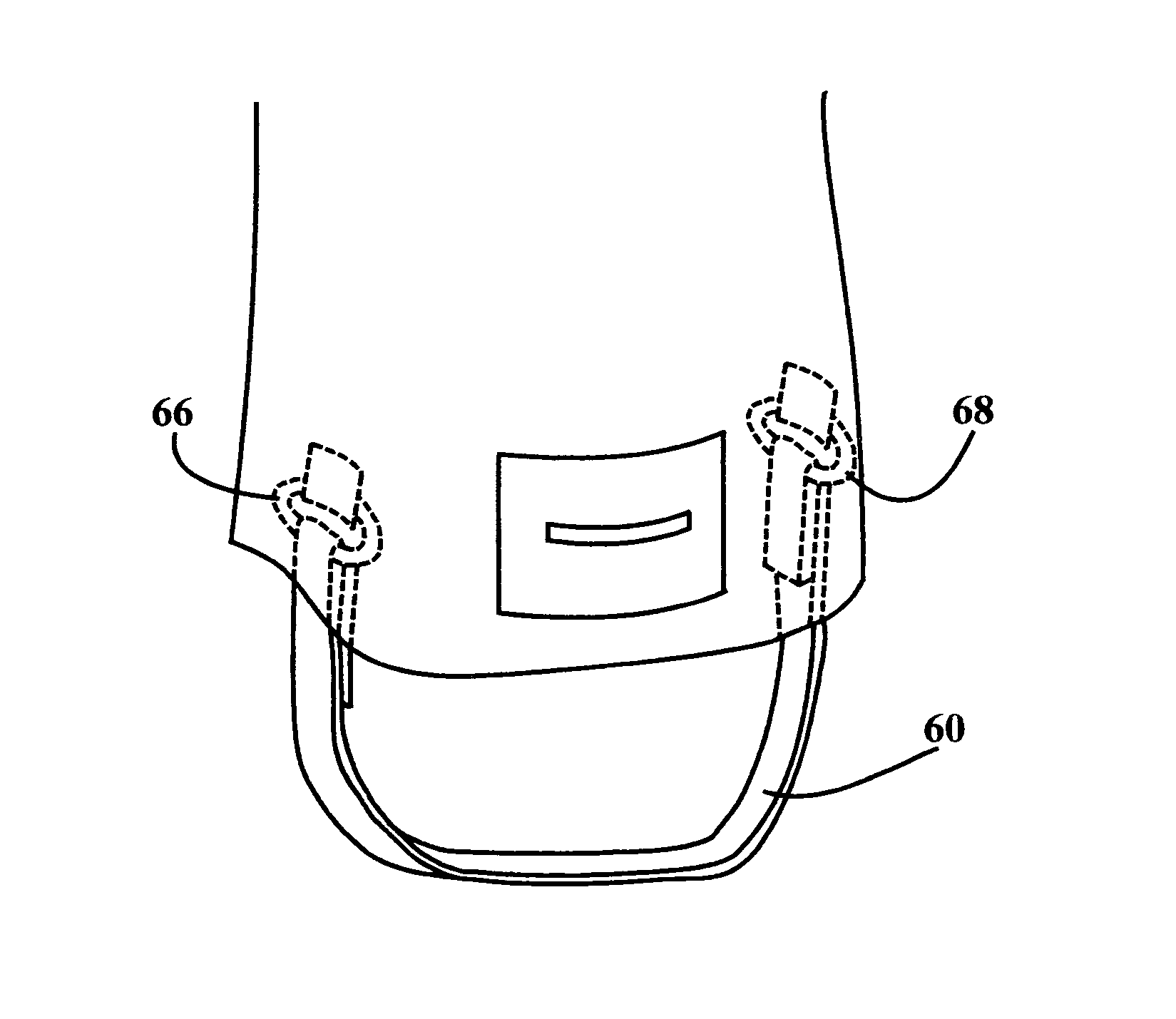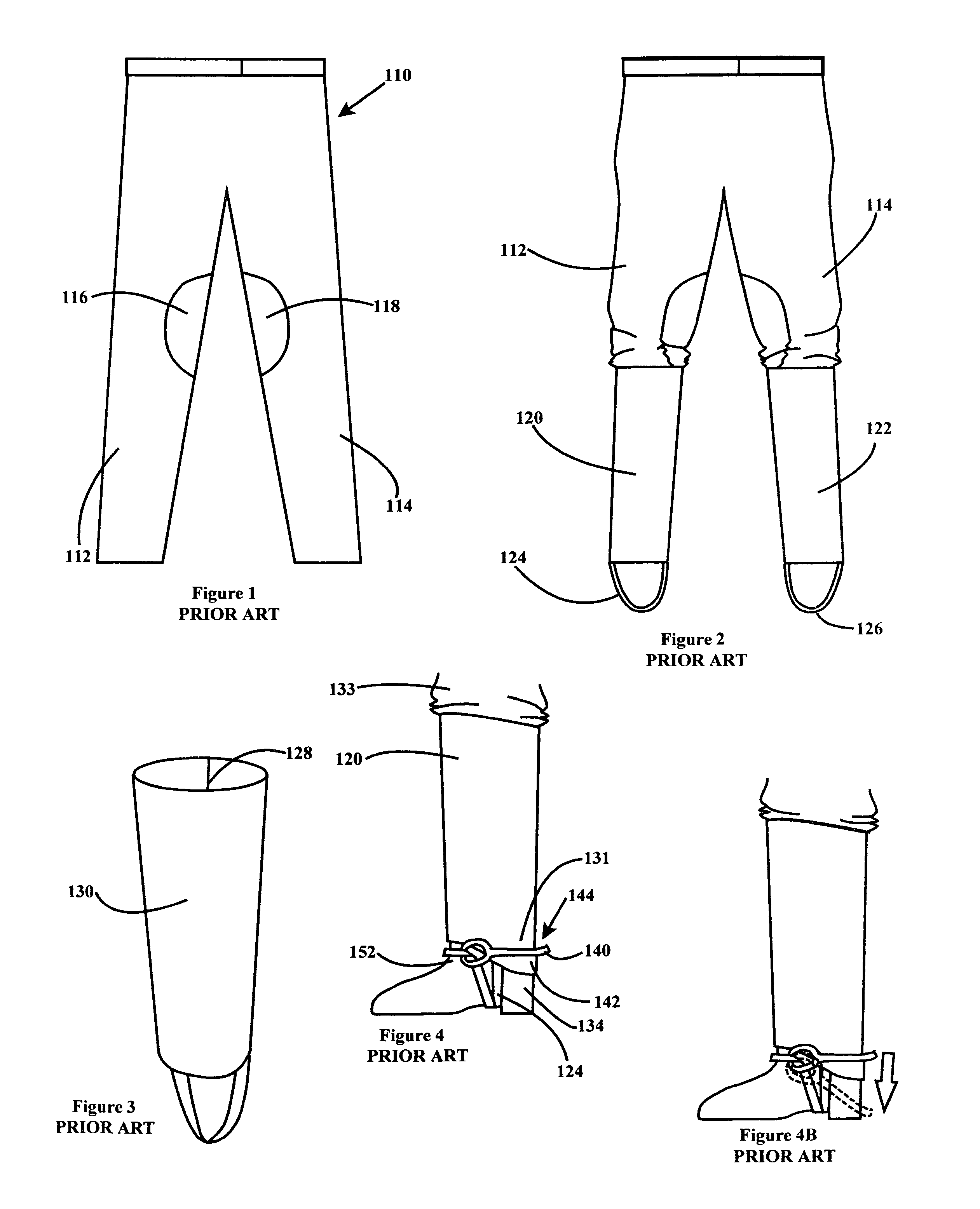Equestrian riding garment
a technology for riding garments and lower body, applied in the field of riding garments, can solve the problems of affecting the comfort of riding, the difficulty of putting on and taking off the lower body garments, and the inconvenience of grooming and bathing the horse,
- Summary
- Abstract
- Description
- Claims
- Application Information
AI Technical Summary
Benefits of technology
Problems solved by technology
Method used
Image
Examples
Embodiment Construction
[0044]The lower body garment 10 of the present invention comprises a single article of clothing worn by an equestrian. The utilitarian features of the lower body garment 10, set forth in more detail herein, are particularly advantageous to a rider of a horse requiring flexibility and freedom of movement. Without limitation, the lower body garment 10 is well suited to English style riders such as competitive dressage riders, eventers, hunters and jumpers.
[0045]The lower body garment 10 has two sections comprising pant legs 12, 14 that cover the rider from waist to ankles. The legs 12, 14 of the garment 10 are distinctive by the provision of gripping / protective fabric sections 16, 18 located on the inner portion of the legs 12, 14. The gripping / protective fabric sections 16, 18 comprise a second layer of fabric, such as leather or suede in the most preferred embodiment, sewn onto a base layer of fabric, such as a 4 way stretch polyester / lycra material. In the most preferred embodiment...
PUM
 Login to View More
Login to View More Abstract
Description
Claims
Application Information
 Login to View More
Login to View More - R&D
- Intellectual Property
- Life Sciences
- Materials
- Tech Scout
- Unparalleled Data Quality
- Higher Quality Content
- 60% Fewer Hallucinations
Browse by: Latest US Patents, China's latest patents, Technical Efficacy Thesaurus, Application Domain, Technology Topic, Popular Technical Reports.
© 2025 PatSnap. All rights reserved.Legal|Privacy policy|Modern Slavery Act Transparency Statement|Sitemap|About US| Contact US: help@patsnap.com



